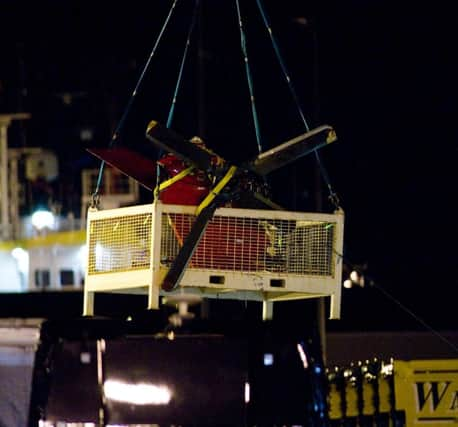Super Puma inquiry looks into precautions


Bond Offshore Helicopters have admitted that proper procedures were not followed when problems first emerged with the AS332-L2 on March 25, a few days before the chopper crashed.
A magnetic particle was uncovered on the epicyclic chip detector component of the gearbox on that day.
Advertisement
Hide AdAdvertisement
Hide AdBut aircraft engineers carried out a different set of procedures due to confusion between Bond and Eurocopter staff during a phone call to the manufacturers that day.
It emerged after the tragedy that Eurocopter experts believed Bond engineers had discovered a problem with a different helicopter part.
A fatal accident inquiry into the men’s deaths off the coast of Peterhead on April 1, 2009 is being held at the Town House in Aberdeen and is expected to last six weeks.
Lawyer Tom Marshall said the families of those who died wanted to know about the procedures in place which could have prevented the oil workers’ deaths.
He said: “What precautions could have been taken to avoid the disaster, that’s what the families want to know - what were the operations to avoid the error.”
Former Bond maintenance manager John Crowther said engineers were being “very cautious” at the time of the crash because they were being scrutinised by air accident investigators.
Investigation
A Bond Super Puma had ditched near a BP oil platform in the North Sea in the ETAP field in foggy conditions on February 18, 2009.
The 16 passengers and two crew had survived but at that time the cause of the incident was unknown. Air Accident Investigation Branch staff were investigating Bond practices and procedures.
Advertisement
Hide AdAdvertisement
Hide AdThe inquiry heard that a similar problem with the epicyclic chip detector was uncovered on a Bond-operated helicopter in 2008.
Bond engineer Pete Brown had contacted Eurocopter to ask for permission to fly the aircraft back to Aberdeen from Sumburgh.
The gearbox part was then sent to the manufacturers in France for repairs.
The engineer was still working at the Bond depot in Aberdeen at the time of the Super Puma tragedy but was not involved in maintenance work carried out on the aircraft just before the crash.
Additional checks on gearbox components had been ordered on the chopper every 25 flying hours after the metallic particle was discovered on March 25.
Mr Crowther he had not been aware of the problem with the Search and Rescue aircraft in 2008 until after the tragedy the following year.
Mr Marshall asked: “If something unexpected happens in the course of the maintenance of a helicopter, what procedures do you have for disseminating the experience to your staff?”
He replied: “We have a system called technical information letters, that’s how we make engineers aware of lessons learned with various problems.”
Advertisement
Hide AdAdvertisement
Hide AdHe told the inquiry that photographs were also normally sent to engineers in the technical letters.
Mr Crowther said he was not aware of any information being passed to staff in the engineering department about the problem with the Bond aircraft in 2008.
He agreed that it would have been a good idea to let the engineers know about it.
The inquiry continues on Thursday afternoon.